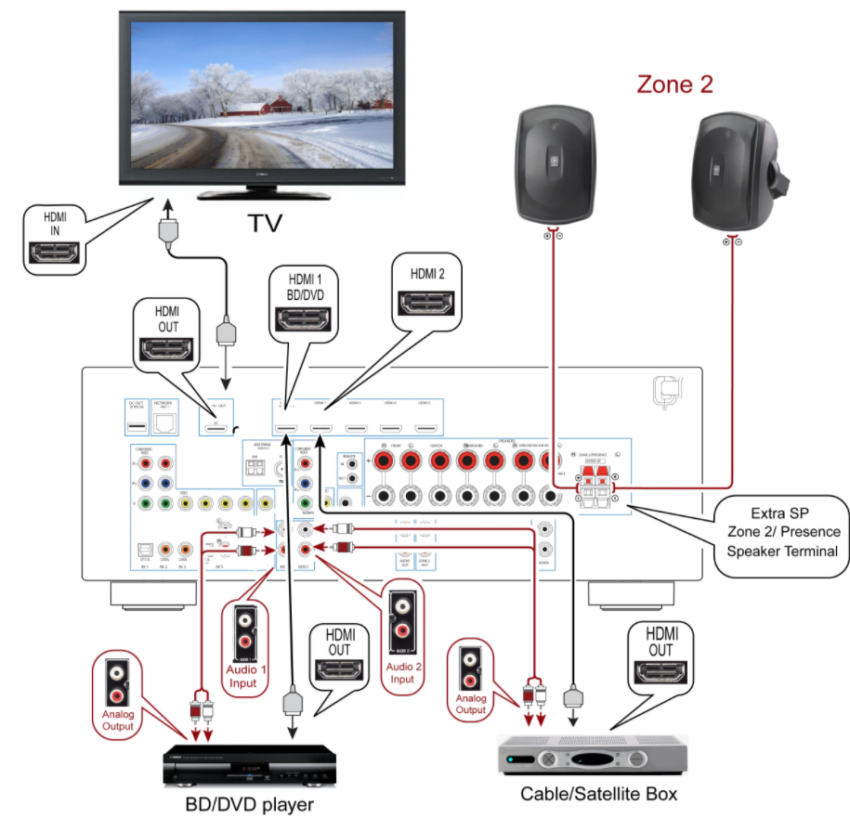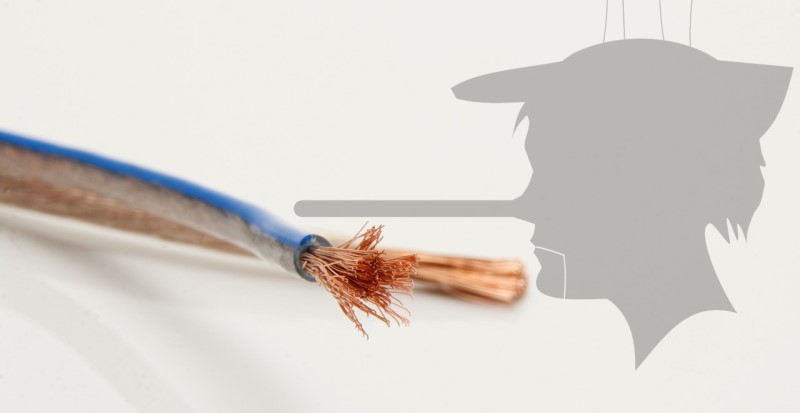Your High-End Cables are Hurting Your Sound
If we take high-end cable manufacturers at their word, their cables are hurting your sound. We’ve all read reviews of high-end audio gear. Invariably they talk about their cables and what that had attached to what. Sometimes the reviews are ABOUT the cables. They usually sound like this: “I attached my OOA (Outrageously Overpriced Audio) speakers to my LH (Ludicrously Heavy) monobloc amp using REAITDPFTBIWARFALATJDPTW (Ridiculously Expensive And I Totally Didn’t Pay For Them Because I Write Audio Reviews For A Living And This Job Doesn’t Pay That Well) speaker cables. Suddenly, the audio came into focus and I could hear things I could never hear before!”
Yeah, if that sounds like all a bunch of bull, there is a really easy explanation why.
What Cables Do
No matter what cable you talk about in your system, it has one job. It takes the input and carries it to the output. If that is a power cable, it takes the energy from the all and transmits it to your device. If it is a speaker cable, it takes the signal from the amplifier and transmits it to the speakers.
That’s all. That’s it. Nothing else.
A faulty cable would, in some way, fail in this one job. That failure would mean that the input and the output would somehow not match. This would be something that is measurable. Something that devices far more sensitive than our ears could detect. That is why cables (from reputable manufacturers) are tested before they are sold. They want to ensure that you are getting a product that does what it says on the tin.
What Cables Don’t Do
But high-end cable manufacturers say that their cables DO change the sound. That can only mean it hurts it, right?
Cables are not equalizers. They shouldn’t change the signal. We’ve got DSP programs and room correction algorithms to do that. Heck, you can buy a standalone EQ if you want to. But what you don’t want is a cable that is so poorly built that it somehow distorts the signal as it passes through. If you used such wires, it would mean that you would need to switch them out every time to change your gear. Boy! Wouldn’t that be inconvenient!
Well, not for cable manufacturers. If they could convince you that their wires were somehow better (or at least different) than other wires, then you’d buy theirs, right? That is the point. To sell more wires. But let’s think about how this all works.
The Signal Chain

In most systems, there is a source (Blu-ray, DVD, CD, Vinyl) that sends the raw signal to some sort of processor (receiver, integrated amp, pre-amp). That signal is converted, processed, split, EQed, and whatever else before being sent to the amplifier. The amplifier sends the signal, along with power, to the loudspeakers for reproduction.
In each instance, you want the signal to go from each device without any alteration. You want an unmolested signal. Any cable that did anything other than transmitting the signal in the same form as it was received, would be deemed faulty. The signal processing should be done at the processor. Not in the transmission between the devices.
The Great Implied Lie
When you read about high-end cables, there is an implied “truth.” High-end cables are better than “normal” cables. They must be! Look at the prices! Surely they couldn’t charge these prices if their cables were the same as off-the-rack offerings?
That’s the great lie. They suggest, but never really say, that their cables perform better than regular cables. They talk about what they DO and how it is a good thing, but never actually compare themselves to other cables. Especially those off the rack.
They leave the comparisons to the reviewers.
One thing high-end audio reviewers will NEVER do is compare their cables to normal cables. Never. If you were to read nothing but high-end AV reviews, you’d think the starting price for speaker wire was around $600 a foot.
By not acknowledging normal cables, they are implying that they are so substandard as to be unworthy of comparison. That simply isn’t true. By lumping all the “normal” cables together, they affirming that they all perform the same. And by the same, they are all passing their signals without change.
What Does This Mean for High-End Cables

So, are they lying? All these reviewers? Well, I can’t know for sure. I can tell you this: Confirmation bias is very real. If you expect to get a result, your brain will give you what you want. Especially if that result is, “I need to hear something that I can write about so that I can get paid.” But it is more than that.
I believe that some of these high-end cables really are EQs. They really are so poorly built that they do change the sound. My guess is that this happens more with speaker cables than anything else. High-end speaker cables often brag about “fixing” one thing. Could be resistance. Could be inductance. Heck, it could be weird shielding geometry. Mostly it is fixing how to separate you from your money. When you “fix” one aspect of a cable, you often “break” the other aspects. This could, in theory, act like an EQ.
On top of that, many of these cables are connected to high-end (we use that term loosely here) gear that is often esoteric in build and design. These sources and devices very well may be putting out a signal that is somehow different than we might expect. Attaching a poorly designed wire to these devices may change the sound.
But that doesn’t make it better. Just more unpredictable. It also makes the “high-end” cables broken and you definitely shouldn’t buy them. Especially when they are asking astronomical prices per foot.
The High-End Cable Solution
If we believe the reviewers’ claims and the hype from the manufacturers, their high-end cables are defective. Pure and simple. A cable that acts as an EQ should not be tolerated in any reputable system. If you have fairly normal gear and pair it with high-end cabling that is EQing the signal, the cables are hurting your sound. That’s all there is to it.
The solution is to buy gear that is designed to send out a pure signal and match them with well built (and infinitely more affordable) cables that won’t affect the sound. In the end, you’ll end up with a system that sounds better for a fraction of the price of the “high-end” system.


